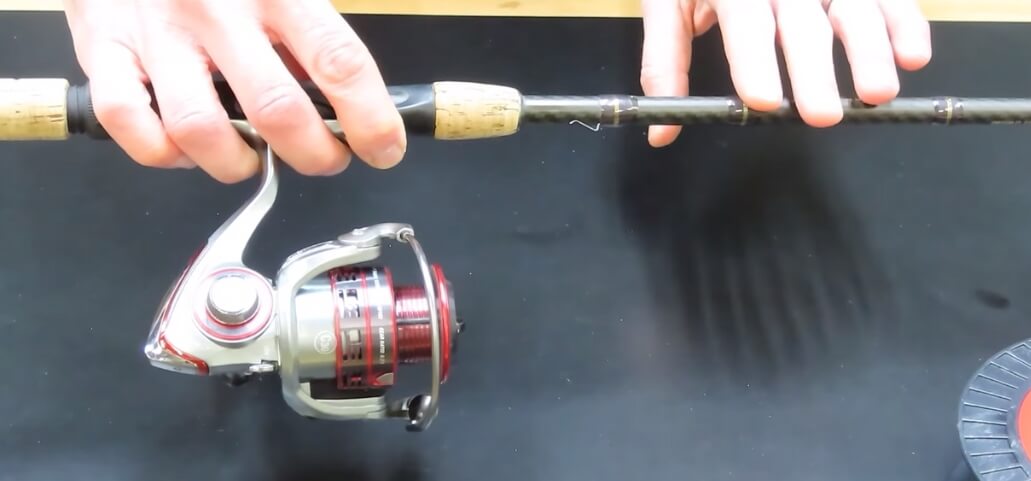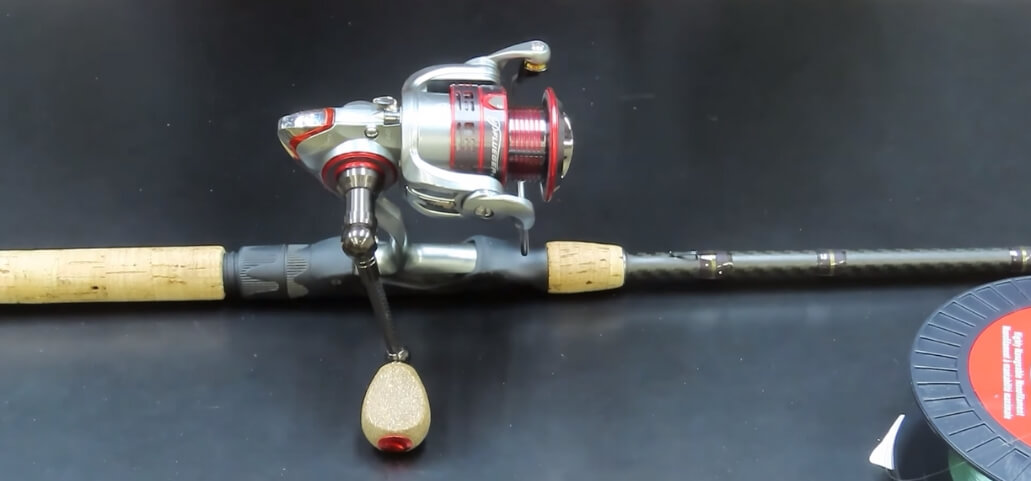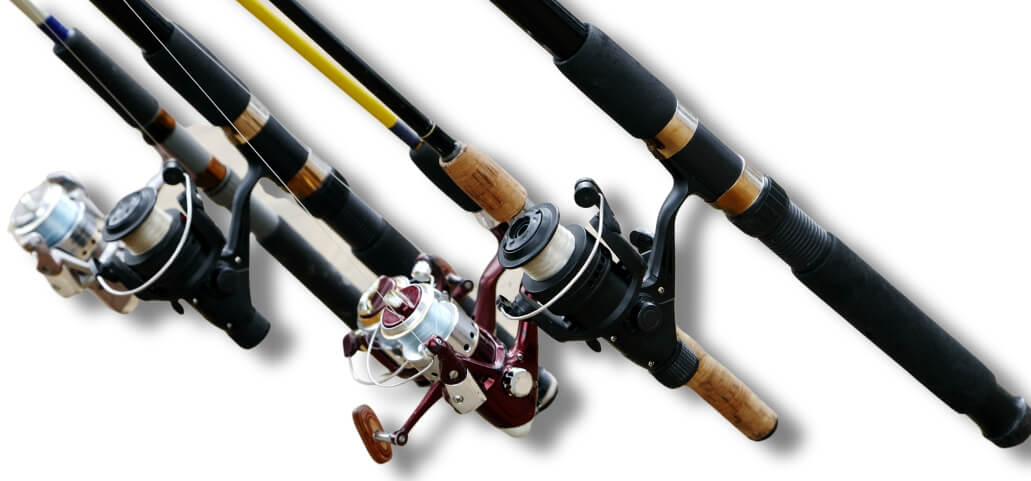Learning how to thread a fishing rod It’s a fundamental ability that all anglers should possess. Whether you’re a beginner or an experienced fisherman, having a well-threaded rod is crucial for a successful and enjoyable fishing experience. In this comprehensive guide, we’ll walk you through the step-by-step process of threading a fishing rod, ensuring you’re ready to cast your line with confidence. Let’s explore how to thread a fishing rod.
Gather the Necessary Equipment
Let’s begin threading now, just to make sure you have everything you need. Besides your fishing rod, here are a few items you’ll need:
- Fishing line
- Scissors or clippers
- Bobber (optional)
- Hooks (optional)
- Sinkers (optional)
Make sure to choose the right-sized hook, bobber, and sinkers based on the type of fish you’re targeting. You can also consult with your local fishing tackle shop for recommendations.
Understanding How to Thread a Fishing Rod Components

You need become familiar with the following essential parts of your fishing rod in order to thread it correctly:
- Rod Sections and Guides: A fishing rod typically consists of multiple sections that fit together, with guides (small rings) positioned along the length of the rod to guide the fishing line.
- Reel Seat: The reel seat is where you attach your fishing reel to the rod, usually located near the handle.
- Tip Top: The tip top is the small guide at the very end of your fishing rod, through which the line passes before extending out into the water.
Preparing the Fishing Rod
Before threading your fishing line, you need to set up your rod:
- Assembling Rod Sections: Carefully connect the rod sections, ensuring they are securely fitted together.
- Inspecting Guides and Tip Top: Check each guide and the tip top for any damage or misalignment. Verify that each of them is in good shape.
- Attaching the Reel: As directed by the manufacturer, fasten your fishing reel to the reel seat. Ensure it is firmly attached and aligned properly.
Threading the Fishing Rod
It’s time to thread the fishing line now that your reel and rod are put together. Follow these steps:
Step 1: Starting with the Reel
- Passing the Line Through the Reel Guide: Gently feed the end of your fishing line through the rebel’s guide to begin the preparations for fishing. This guide is typically situated close to the reel’s bail or spool. Ensure that the line passes smoothly through to avoid any kinks or twists that could affect your fishing experience.
- Securing the Line to the Reel Spool: After threading the line, the next step is to securely attach it to your reel spool. This can be done by tying the line using an arbor knot, which is a simple and effective method for connecting the line to the reel. Alternatively, follow the specific instructions or method recommended by your reel’s manufacturer to ensure the line is attached correctly and securely, preventing it from slipping or tangling during use.
Step 2: Guiding the Line through the Rod
- Passing the Line through Each Guide: Begin with the guide closest to the reel and carefully thread the fishing line through each guide along the rod’s length, progressing steadily towards the tip. This step is crucial for setting up your rod correctly and ensures that the line is distributed evenly, providing a balanced setup for casting.
- Ensuring the Line is Snug in Each Guide: As you proceed to thread the line through each guide, take a moment to ensure that it sits perfectly snug in the center of every guide. Achieving this precise placement is essential for avoiding any potential tangles or snags. Furthermore, it guarantees that the line will flow smoothly through the guides during casting, enhancing your overall fishing experience by ensuring efficient, trouble-free casts.
Step 3: Securing the Line to the Tip Top
- Passing the Line through the Tip Top: Begin by threading the fishing line through each of the guides located along the length of your rod, starting from the one closest to the reel and moving towards the end. The final step in this process involves carefully passing the line through the tip top, which is the smallest guide at the very end of your fishing rod. To ensure that your line is correctly oriented for the best casting and fishing performance, this is an essential step.
- Ensuring the Line is Securely Tied: After successfully passing the line through the tip top, the next step is to attach your chosen lure or bait. This is done by tying the line to your lure or hook using a reliable fishing knot. The Palomar knot and the enhanced clinch knot are two of the best knots for fastening your bait or lure. Each of these knots has its own set of steps, but both are designed to ensure that your line is securely fastened, minimizing the risk of losing your lure or bait during casting or when a fish is hooked. To improve your fishing enjoyment and success, take the time to become proficient with these knots.
How to Thread a Fishing Rod for Beginners

At first, threading your rod may appear difficult if you’re new to fishing. Here are some more pointers to help streamline the procedure:
- Be patient and take your time. Hastily completing the threading operation can result in errors and knots.
- Perfectionism is attained with practice. You will become more proficient and comfortable as you thread your rod more.
- If you’re unsure about any step, don’t hesitate to ask for help from a more experienced angler or refer to instructional videos online.
Conclusion
Every angler should become proficient in the fundamental technique of threading a fishing rod. By following the steps outlined in this guide, you’ll be well on your way to setting up your rod like a seasoned pro. To improve your technique, don’t forget to be patient, take your time, and practice frequently. As you gain experience and spend more time on the water, you’ll develop your own tips and tricks for threading your rod quickly and efficiently. Try a few different things and see what suits you the best.
Frequently Asked Questions
Q1: How to thread a fishing rod with a closed face reel?
Answer: The process for threading a fishing rod with a closed face reel is similar to that of an open-faced reel. However, instead of passing the line through the guide near the reel’s bail or spool, you’ll need to feed it through the small hole on top of the closed face reel before securing it to the spool.
Q2: How often should I rethread my fishing rod?
Answer: Before every fishing expedition, it’s a good idea to periodically check and rethread your fishing rod. Also, if you notice any damage or wear on your line or guides, it’s best to rethread before casting again.
Q3: What is the best type of knot to use when securing my line to the reel spool?
Answer: There are several suitable knots for this purpose, including the arbor knot, uni knot, and improved clinch knot. Choose a knot that you feel comfortable tying and that will securely hold your specific fishing setup.
Q4: Can I reuse the same fishing line when threading my rod?
Answer: Yes, you can reuse the same line as long as it is in good condition and not showing signs of wear or damage. Before every use, it’s a good idea to check your line and replace it if needed.
Q5: Do I need to thread my fishing line through all the guides?
Answer: Yes, it’s important to thread your line through each guide to ensure proper casting and line management. Skipping a guide can lead to tangles or decreased casting distance.
Disclaimer: This blog article contains material that should only be used as general guidance. While we strive to provide accurate and up-to-date information, fishing techniques and equipment may vary depending on factors such as location, type of fish, and personal preference. Wherever you go fishing, make sure to always put safety first and abide by local laws. Any accidents, injuries, or damages that may arise when implementing the advice in this post are not the responsibility of the author or the owner of the website.
Personal Experience: As an experienced angler, I learned the importance of properly threading my fishing rod after early mistakes led to tangles and lost fish. Through persistence and advice from seasoned anglers, I improved my technique. A memorable fishing trip highlighted the value of this skill when a well-threaded rod helped me catch a personal best bass, proving that correct threading is crucial for fishing success and enjoyment.
Why Trust Our Content?
At [Your Website Name], our mission is fueled by a passion for fishing and a commitment to helping anglers enhance their skills. Our experienced team offers practical advice and reliable information based on firsthand experience, expert insights, and thorough research. We aim to support anglers at every level, from beginners facing challenges to seasoned enthusiasts looking to deepen their knowledge. Our content is designed to be engaging, informative, and empowering, making us a trusted resource for anyone looking to improve their angling skills and enjoy their fishing adventures to the fullest.

